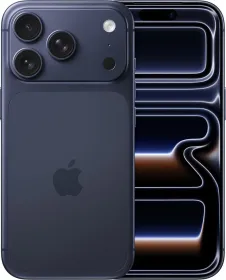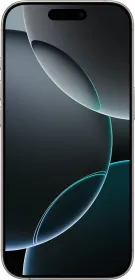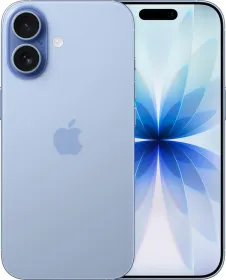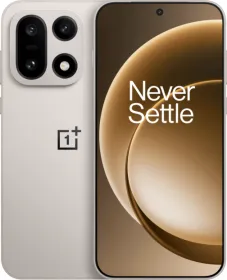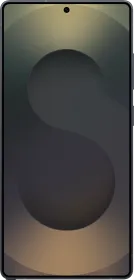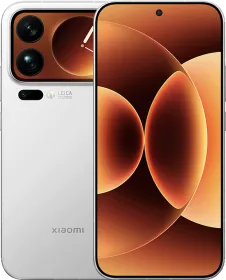The iPhone 17 Pro is finally out, and this year, Apple’s main focus is the new telephoto lens (and the selfie camera). The 17 Pro and 17 Pro Max have the same camera setup, while the main and ultra-wide sensors remain unchanged from last year.
But with the vivo X300 Pro and OPPO Find X9 Pro set to launch soon (October 13 and October 16 in China and December/November in India, respectively), it’s a good time to see how Apple’s latest camera hardware stacks up against these upcoming Pros from OPPO and vivo.
Before we start, a quick note – the “f-number” you see (like f/1.5 or f/2.8) tells you how wide the camera’s aperture is. The smaller the number, the more light the lens can take in, which usually means better low-light shots and more background blur.
The number in brackets (like f/6.01 or f/8.8) is the full-frame aperture equivalent, which shows how much light the camera can actually take in relative to its sensor size. Again, the lower the number, the better.
Main Camera

| Phone | Sensor | Sensor Size | Aperture | Full-frame Equivalent Aperture | Focal Length | Stabilization |
| iPhone 17 Pro | 48 MP Sony IMX903 | 1/1.28-inch | f/1.78 | f/6.01 | 24 mm | 2nd-gen sensor-shift OIS |
| OPPO Find X9 Pro | 50 MP Sony LYT828 | 1/1.28-inch | f/1.5 | f/5.07 | 23 mm | OIS |
| vivo X300 Pro | 50 MP Sony LYT828 | 1/1.28-inch | f/1.6 | f/5.40 | 23 mm | OIS CIPA 5.5-Rated |
All three phones have almost the same main sensor size. Apple uses Sony’s IMX903, while OPPO and vivo use the newer LYT828, which might perform slightly better since it’s a more advanced sensor.

OPPO and vivo also have brighter apertures (f/1.5 and f/1.6 vs Apple’s f/1.78), so they can take in a bit more light. The difference won’t be huge, but overall, OPPO and vivo should produce better results.
ALSO READ: OPPO Find X9 Series Will Launch with Hasselblad’s First-Ever Smartphone Photography Kit
Ultra-Wide Camera

| Phone | Sensor | Sensor Size | Aperture | Full-frame Equivalent Aperture | Focal Length | Autofocus |
| iPhone 17 Pro | 48 MP Sony IMX972 | 1/2.55-inch | f/2.2 | f/13.2 | 13 mm | Yes |
| OPPO Find X9 Pro | 50 MP Samsung JN5 | 1/2.76-inch | f/2.0 | f/13.2 | 15 mm | Yes |
| vivo X300 Pro | 50 MP Samsung JN5 | 1/2.76-inch | f/2.0 | f/13.2 | 15 mm | Yes |
The iPhone’s ultra-wide is wider (13 mm vs 15 mm) and has a slightly larger sensor, so it captures more of the scene. The OPPO and vivo sensors have brighter f/2.0 apertures, which makes the overall intake similar to the iPhone. Still, the iPhone’s ultra-wide should be better due to the wider field of view and the larger sensor.
ALSO READ: OPPO Reveals First Photo From Find X9 Pro’s 200MP Camera, Calls It an “Image Quality Revolution”
Telephoto Camera
| Phone | Sensor | Sensor Size | Aperture | Full-frame Equivalent Aperture | Focal Length | Min. Focus Distance (Lower is Better) | Stabilization |
| iPhone 17 Pro | 48 MP Sony IMX973 | 1/2.55-inch | f/2.8 | f/16.8 | 100 mm | 100 cm | 3D sensor-shift OIS |
| OPPO Find X9 Pro | 200 MP Samsung HP5 | 1/1.56-inch | f/2.1 | f/8.8 | 70 mm | 10 cm | Dual floating lens OIS |
| vivo X300 Pro | 200 MP Samsung HPB | 1/1.4-inch | f/2.67 | f/10 | 85 mm | 15 cm | CIPA 5.5-certified OIS |
This is where Apple falls badly behind. The iPhone 17 Pro’s telephoto lens has a minimum focusing distance of 100 cm, which means it can’t focus on nearby subjects. Try to shoot close-ups, and the phone will just switch to a crop from the main camera. That means no proper telephoto macro or close-up shots.
OPPO and vivo absolutely annihilate Apple here. OPPO’s telephoto can focus as close as 10 cm, while the vivo can focus at 15 cm.
The iPhone 17 Pro has the smallest sensor (1/2.55-inch) and an f/2.8 aperture. Its equivalent aperture is f/16.8, which means its lens behaves like a tiny pinhole compared to a full-frame setup. So, very little light hits the sensor. It’s not bad, but definitely not up to today’s standards.
ALSO READ: Your First Look at OPPO Find X9 and Find X9 Pro Design
The OPPO Find X9 Pro features a significantly larger sensor (1/1.56-inch) and a wider aperture (f/2.1), resulting in an equivalent aperture of f/8.8. That’s about 1.86 stops more light intake (1 stop = double the light intake) of the iPhone’s telephoto. It can even focus as close as 10 cm.
The vivo X300 Pro has the biggest telephoto sensor (1/1.4-inch) with an f/2.67 aperture, giving an f/9.99 equivalent. Even though its f-number looks much smaller than OPPO’s, its larger sensor makes up for it. It still gets roughly 1.5 stops more light than the iPhone 17 Pro’s telephoto (1 stop = double the light intake).
The iPhone’s 3D sensor-shift OIS is impressive, but the other two also have advanced stabilization. OPPO uses a dual floating lens system, while vivo’s telephoto has industry-leading CIPA 5.5 certification. When it comes to zoom and macro, OPPO and vivo are in a completely different league.
ALSO READ: vivo X300 and X300 Pro to Come with 2.35x Teleconverters
Selfie Camera
| Phone | Sensor | Sensor Size | Aperture | Full-frame Equivalent Aperture | Focal Length | Autofocus |
| iPhone 17 Pro | 18 MP Sony IMX914 | 1/2.6-inch | f/1.9 | f/11.4 | 20 mm | Yes |
| OPPO Find X9 Pro | 50 MP Samsung JN5 | 1/2.76-inch | f/2.0 | f/13.2 | 21 mm | Yes |
| vivo X300 Pro | 50 MP Samsung JN5 | 1/2.76-inch | f/2.0 | f/13.2 | 21 mm | Yes |
Apple’s 18 MP front camera might sound weaker if you look at just the megapixels, but it uses a square sensor, meaning you can take portrait and landscape selfies without rotating the phone. It also helps with video recording, as the same is possible there too. It also has the brightest aperture of all.

OPPO and vivo, on the other hand, go all-in with 50 MP sensors with a slightly smaller-sized sensor and slightly less wide aperture. The focal length is 21 mm, which is almost as wide as the iPhone. However, the iPhone’s key advantage is the square sensor, making it the clear winner here.
ALSO READ: Apple’s iPhone 17 Just Got Smarter Selfies: Meet the Center Stage Camera That Follows You
Summing Up
| iPhone 17 Pro | OPPO Find X9 Pro | vivo X300 Pro | |
| Main | 48 MP IMX903, 1/1.28-inch, f/1.78 (f/6.01), 24 mm | 50 MP LYT828, 1/1.28-inch, f/1.5 (f/5.07), 23 mm | 50 MP LYT828, 1/1.28-inch, f/1.6 (f/5.40), 23 mm |
| Ultra-wide | 48 MP IMX972, 1/2.55-inch, f/2.2 (f/13.2), 13 mm | 50 MP JN5, 1/2.76-inch, f/2.0 (f/13.2), 15 mm | 50 MP JN5, 1/2.76-inch, f/2.0 (f/13.2), 15 mm |
| Telephoto | 48 MP IMX973, 1/2.55-inch, f/2.8 (f/16.8), 100 mm, 100 cm MFD | 200 MP HP5, 1/1.56-inch, f/2.1 (f/8.8), 70 mm, 10 cm MFD | 200 MP HPB, 1/1.4-inch, f/2.67 (f/9.99), 85 mm, 15 cm MFD |
| Selfie | 18 MP IMX914, 1/2.6-inch, f/1.9 (f/11.4), 20 mm | 50 MP JN5, 1/2.76-inch, f/2.0 (f/13.2), 21 mm | 50 MP JN5, 1/2.76-inch, f/2.0 (f/13.2), 21 mm |
For the main camera, all three phones are close, with OPPO and vivo slightly ahead because of their brighter apertures and a more advanced sensor. In the ultra-wide, Apple wins thanks to its wider frame and larger sensor, although the light intake is similar.
In telephoto, vivo and OPPO crush Apple with huge sensors, short focusing distances, and brighter apertures. For selfies, Apple’s front camera is more practical and better, while OPPO and vivo have similar hardware but without the square sensor and its benefits.
Overall, vivo X300 Pro and OPPO Find X9 Pro have clearly better hardware, minus the selfie. Apple still holds its ground with video performance and the wider ultra-wide, but in overall camera hardware, the Chinese flagships are a big step ahead of Apple.
ALSO READ: The iPhone 17 Pro’s 4X Telephoto Camera: Upgrade or Downgrade?

You can follow Smartprix on Twitter, Facebook, Instagram, and Google News. Visit smartprix.com for the latest tech and auto news, reviews, and guides.


















